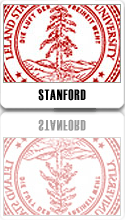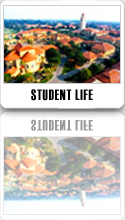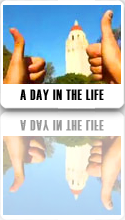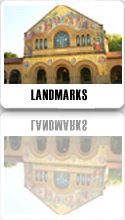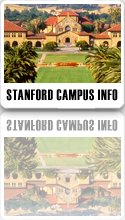
Campus Life
Campus life at Stanford means celebrating the extraordinary talents among students, faculty, and organizations while attracting world-class speakers, performers, and scholars from around the world. These events offer the unique opportunity to live and learn in an inspring college environment.
Whether it is a prominent speaker, a capella concert, an academic colloquium, a nationally competitive athletic game, or the opening of a new exhibit at the on-campus museum, Stanford is abuzz with opportunities to discover new passions, engage with a vital community and have fun.
Stanford's 6,600 undergraduates and 7,800 graduate students are distinguished by their initiative, love of learning and commitment to the larger world. Independent thinkers and relentlessly curious, students at Stanford bring passion and imagination to everything they do.
Stanford offers its students an inspiring college experience. The sprawling 8,100-acre campus provides students a myriad of opportunities from its thriving residential campus and diverse student population to cultural and athletic events to campus and community resources.
Stanford students move in many different directions, often simultaneously. Having the ability to engage in multiple interests and find friends who are not only similarly engaged, but also exceptionally talented in those areas, is one of the values of Stanford's diversity. Stanford recognizes that student organizations enrich the social, cultural and education experiences of students and the larger University community. About 600 organized student groups at Stanford cover a rnage of interests: academic, international, political, environmental, religious, ethnic, social, community service and recreational.
- Courtesy of Stanford University
Student Organizations
Stanford students move in many different directions, often simultaneously. Having the ability to engage in multiple interests and find friends who are not only similarly engaged, but also exceptionally talented in those areas, is one of the values of Stanford's diversity. Stanford recognizes that student organizations enrich the social, cultural and education experiences of students and the larger University community. About 600 organized student groups at Stanford cover a rnage of interests:
- Academic
- Athletic/Recreational
- Careers/Preprofessional
- Community Service
- Ethnic/Cultural
- Fraternities/Sororities
- Health/Counseling
- Media/Publications
- Music/Dance/Creative Arts
- Political/Social Awareness
- Religous/Philosophical
Residential Life
Your intellectual, social, and cultural lives will intersect in Stanford's vibrant residential communities. All freshmen are required to live on Stanford campus, and all students are guaranteed four years of campus housing. Because most students live on campus (94% at Stanford) and the emphasis placed on residential education, the dorm community becomes one of if not the most exciting and stimulating places on campus.
Residential Education
The Residential Education program provides Stanford undergraduates a small community experience within a large research university. The essential conviction of Residential Education is that living and learning should be integrated, not separate; that formal teaching, informal teaching, informal learning, and person support in residences is integral to a Stanford education. Residential Education programs extend the classroom into the residence and complement the academic curriculum with activities and experiences essential to students' preparation for a life of leadership, intellectual engagement, citizenship and service.
Residential Education begins with the Resident Fellows, members of the faculty or senior staff who live in residence halls and help provide a warm and intellectually stimulating environment. A residence staff, comprised of juniors and seniors, together offer personal and academic counseling. These staff roles include Residence Assistants (RAs), Peer Academic Advisors (PAAs), Peer Health Educators (PHEs), Residence Computer Coordinators, and others depending on the type of house.
Residential education in all its forms is one of the reasons that, despite the university's size and breadth, Stanford is an intimate community.
Dorm Programming
Residential Fellows and student Resident Assistants in each residence help residents plan educational, social, and recreational activities. Students are encouraged to initiate programs on their own and to participate in programs planned by other house residents. Wherever you live during your first year, you can expect a San Francisco scavenger hunt in the Fall, a trip to Lake Tahoe in the Winter, and an end-of-year celebration in the Spring that will no doubt arrive too soon. Other popular in-house activities organized by students include faculty dinners, special speakers, house seminars, poetry readings, dorm intramural competitions as well as trips to Yosemite and elsewhere...




